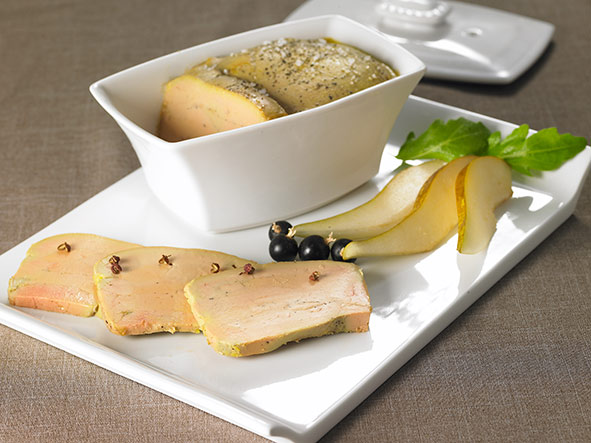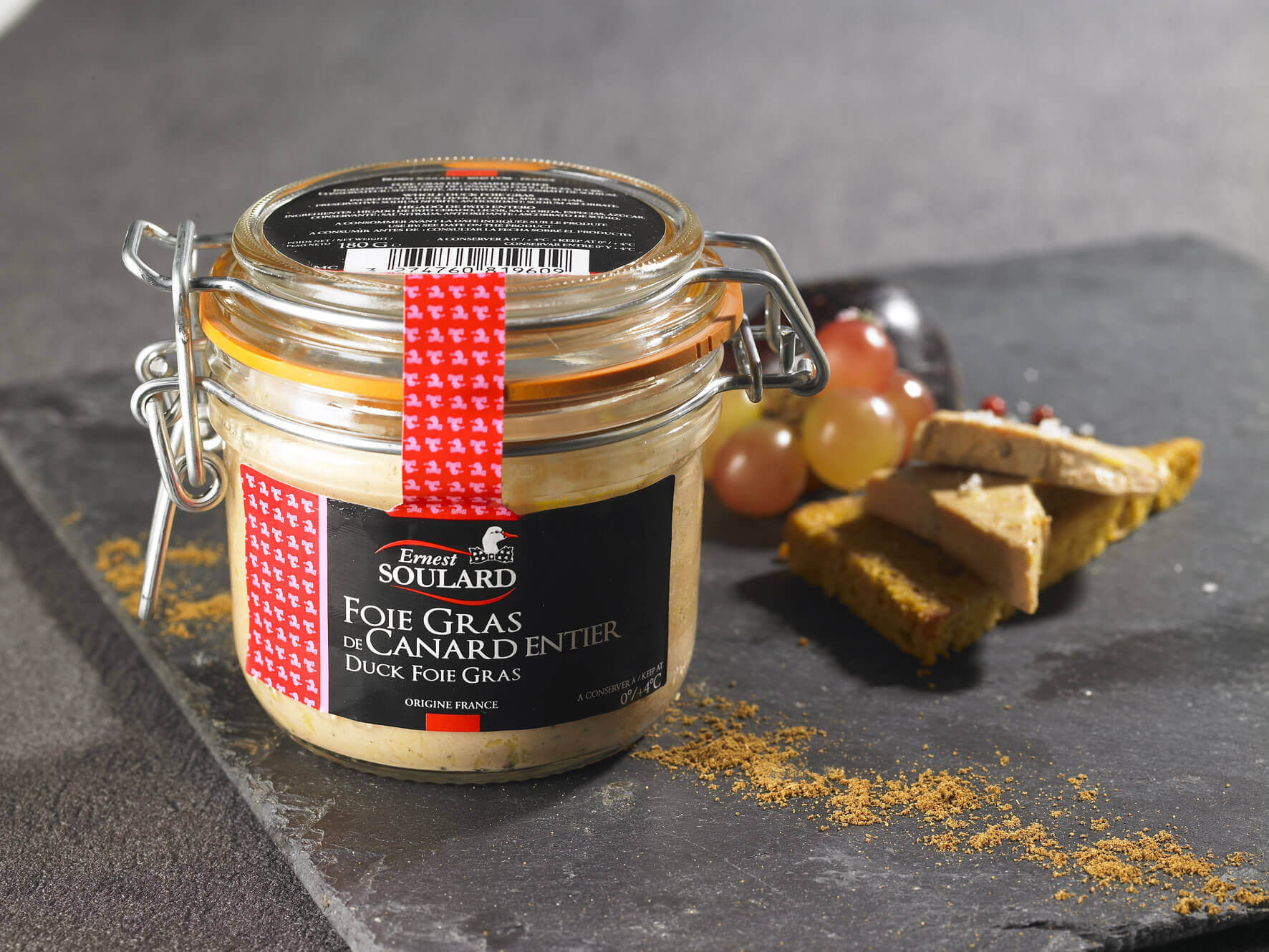Preparing Foie Gras in a terrine, a jan or au torchon
For mouth-watering foie gras, it is important to be especially attentive during its preparation. There are different ways to make foie gras: in a terrine, in a jar, au torchon, and more. Your duck producer in Vendée shares expert advice on how to make a great foie gras.
Preparing Foie Gras in a Terrine
To prepare foie gras in a terrine, remove it from the refrigerator 1 hour before working with it, then devein the foie gras. If you want to keep things simple, opt for a deveined duck foie gras. Prepare the seasoning: mix 6 g fine sea salt with 2 g ground black pepper and a pinch of extra-fine sugar. Next, season the foie gras, sprinkling each side with the mixture. Then, splash the liver with 2 tsp of the alcohol of your choice (like Port, Layon, Pineau, Armagnac, etc.). Finally, close up the foie gras in its original shape. Preheat the oven to 100°C (212°F), preferably in a ventilated position. Prepare a water bath and place the terrine in it. The foie gras should be half immersed in the hot water. Cover the terrine and bake the whole set-up for 60 minutes in the oven preheated to 100°C (212°F). Remove the terrine from the oven and chill in the refrigerator for 48 hours.

Duck Foie Gras in a Jar
When you prepare foie gras in a jar, the amount of foie gras you use will depend on the size of your jars. In general, you should plan for 60 to 70 g per person. For a 500 ml jar, count on using 1 raw duck foie gras weighing 450 g. First, sterilize the jars, while they are still empty.
Start by deveining the liver. Prepare the seasoning: mix 7 g fine sea salt with 1 g ground black pepper and a pinch of extra-fine sugar. Next, season the foie gras, sprinkling each side with the mixture. Close up the foie gras in its original shape. Place the small lobe on the big one. Fold it all together, trying to give the liver the rough shape of the jar, then slide it into the clean jar. Seal hermetically. Place a paper towel in the bottom of a casserole dish and put the jar on top. Fill the casserole dish with cold water, to 3/4 the height of the jar. Bring to a boil, cover and simmer for 2 hours.
Once done, remove the jar from the dish and let it cool at room temperature. When stored in a cool, dry, dark place, this duck foie gras with fine sea salt will keep for 3 to 4 years. Remember to move it to the refrigerator one day before eating.

Cooking Foie Gras au Torchon
Foie gras au torchon is another technique for preparing foie gras that allows it to absorb all of the flavor of the court-bouillon stock. Ideally, you should prepare your foie gras 8 days in advance, to give it the time to fully absorb the seasoning. The first step is to prepare a court bouillon to your taste.
While doing that, prepare your 550 g of foie gras. Season both sides with 1 level tsp fine sea salt, 2 level tsp ground black pepper and 2 tbsp of the alcohol of your choice. Before closing up the foie gras, you can certainly add other ingredients, like lobster, for example. Close up your foie gras in its original shape. Seal the foie gras in plastic wrap and roll it back and forth on a worktop until its shape becomes an even cylinder. Prick the fresh foie gras, so the court-bouillon can soak into it. Next, roll it in a dish towel for hanging and tie both ends of the towel together using cooking twine.
Place the foie gras in the court-bouillon and cook for 1 hour at 70°C (158°F), for a foie gras weighing approximately 550 g. If you want to be sure of the temperature, you can put your stock pot in the oven. Remove the pot from the heat, cover it with plastic wrap and let sit at room temperature. Next, chill for 24 hours in the refrigerator. Finally, remove the towel, but be sure not to remove the plastic wrap from the foie gras. You can store it that way for up to 8 days.